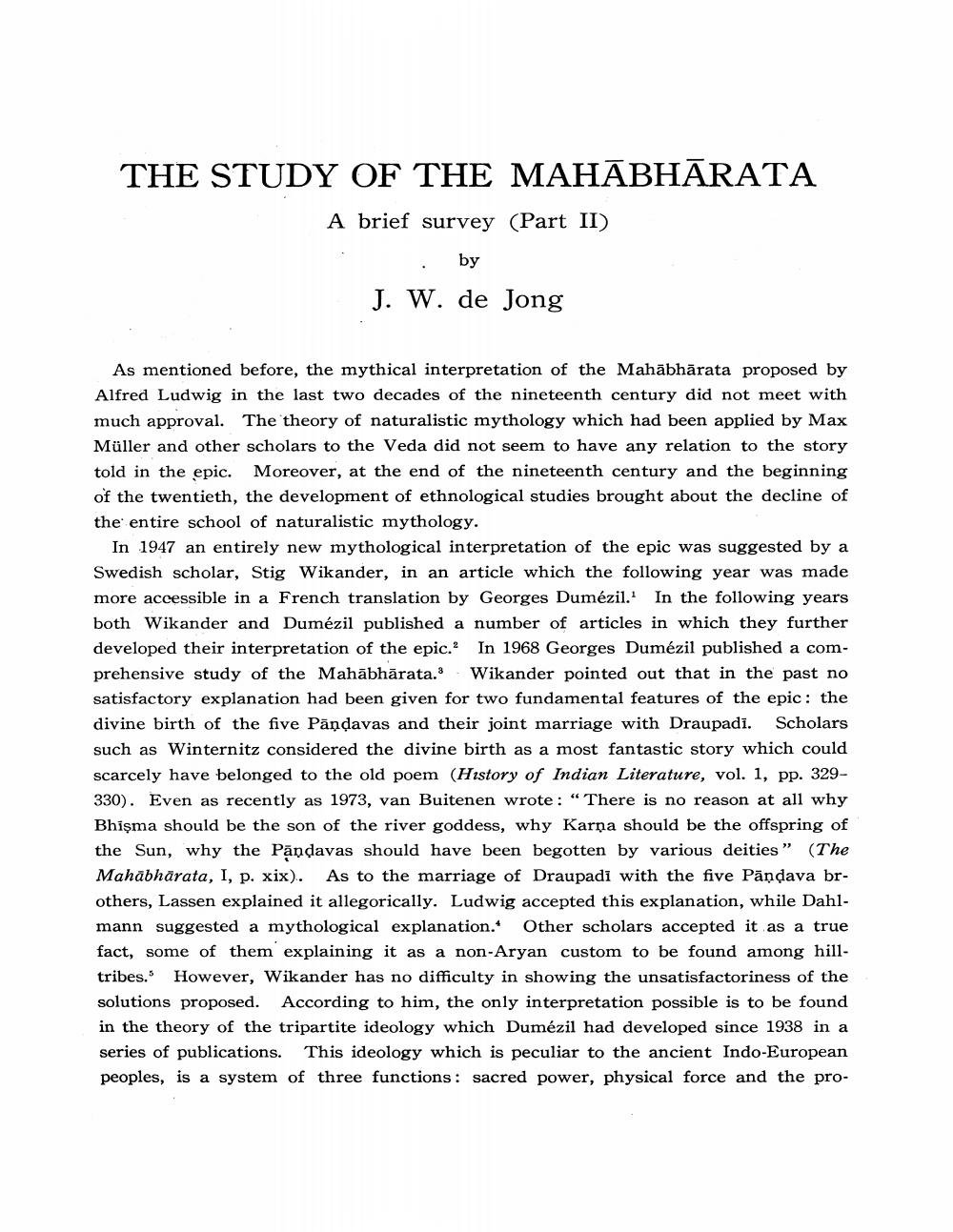Book Title: Study Of Mahabharata Author(s): J W De Jong Publisher: J W De Jong View full book textPage 1
________________ THE STUDY OF THE MAHABHARATA A brief survey (Part II) by J. W. de Jong As mentioned before, the mythical interpretation of the Mahabharata proposed by Alfred Ludwig in the last two decades of the nineteenth century did not meet with much approval. The theory of naturalistic mythology which had been applied by Max Müller and other scholars to the Veda did not seem to have any relation to the story told in the epic. Moreover, at the end of the nineteenth century and the beginning of the twentieth, the development of ethnological studies brought about the decline of the entire school of naturalistic mythology. In 1947 an entirely new mythological interpretation of the epic was suggested by a Swedish scholar, Stig Wikander, in an article which the following year was made more accessible in a French translation by Georges Dumézil. In the following years both Wikander and Dumézil published a number of articles in which they further developed their interpretation of the epic. In 1968 Georges Dumézil published a comprehensive study of the Mahabharata. Wikander pointed out that in the past no satisfactory explanation had been given for two fundamental features of the epic: the divine birth of the five Pandavas and their joint marriage with Draupadi. Scholars such as Winternitz considered the divine birth as a most fantastic story which could scarcely have belonged to the old poem (History of Indian Literature, vol. 1, pp. 329330). Even as recently as 1973, van Buitenen wrote: "There is no reason at all why Bhisma should be the son of the river goddess, why Karna should be the offspring of the Sun, why the Pandavas should have been begotten by various deities" (The Mahābhārata, I, p. xix). As to the marriage of Draupadi with the five Pāṇḍava brothers, Lassen explained it allegorically. Ludwig accepted this explanation, while Dahlmann suggested a mythological explanation. Other scholars accepted it as a true fact, some of them explaining it as a non-Aryan custom to be found among hilltribes. However, Wikander has no difficulty in showing the unsatisfactoriness of the solutions proposed. According to him, the only interpretation possible is to be found in the theory of the tripartite ideology which Dumézil had developed since 1938 in a series of publications. This ideology which is peculiar to the ancient Indo-European peoples, is a system of three functions: sacred power, physical force and the proPage Navigation
1 2 3 4 5 6 7 8 9 10 11 12 ... 21
